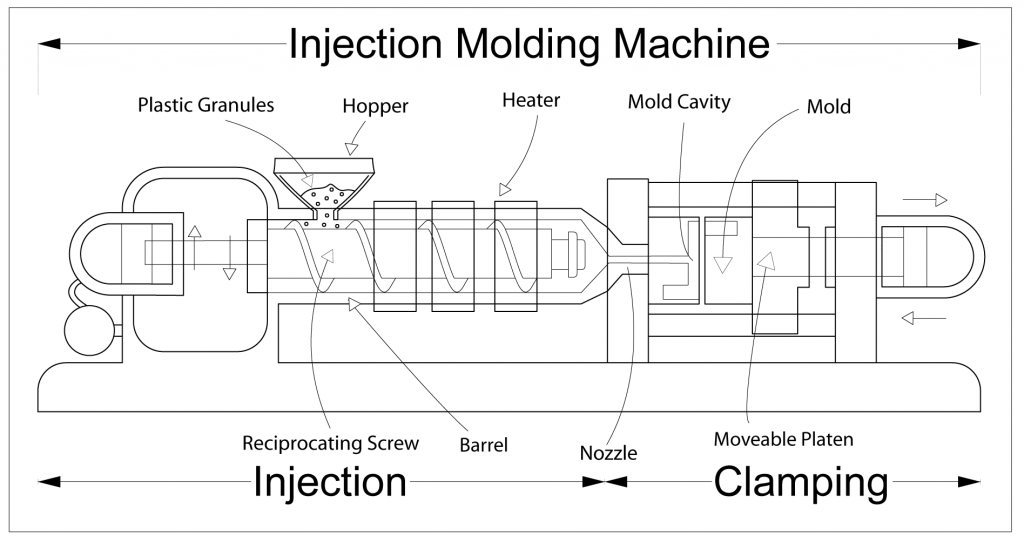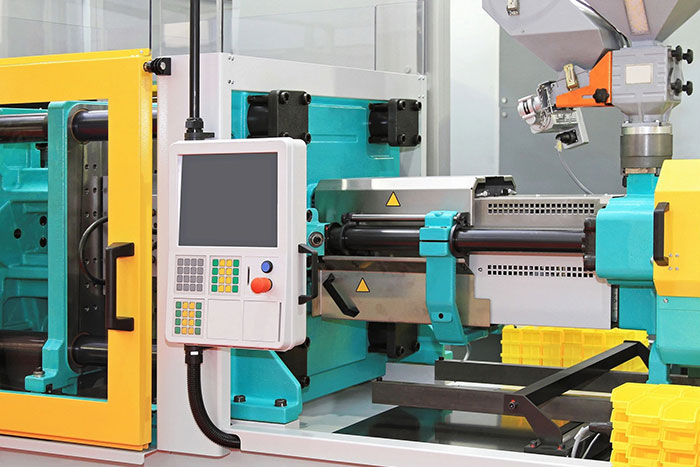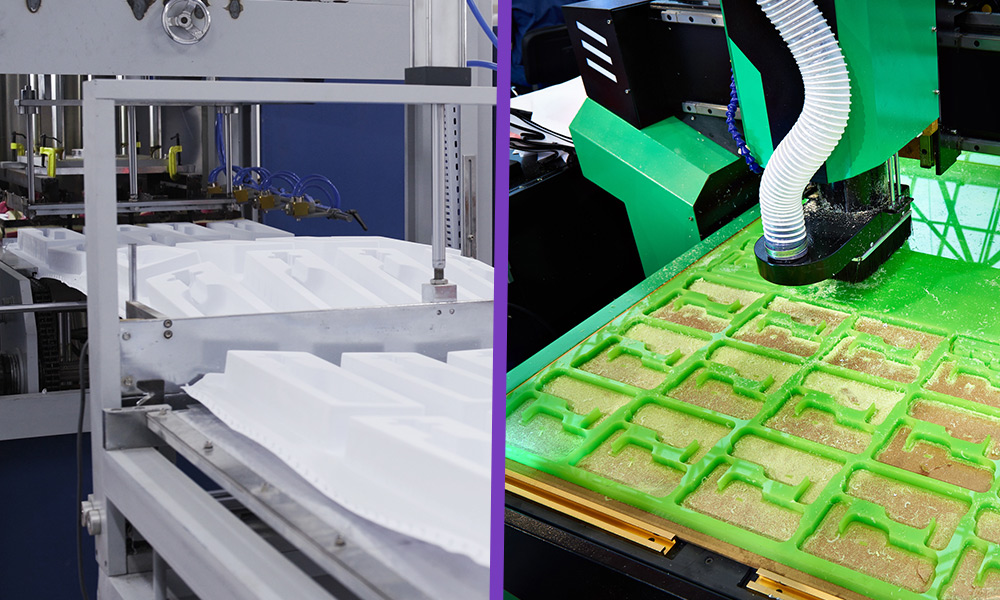Understanding the Basics of Plastic Shot Molding Procedures
Plastic shot molding serves as a keystone of contemporary manufacturing, giving a systematic approach to generating intricate components with accuracy. Discovering these important aspects can reveal exactly how even small changes can lead to significant improvements in production end results, raising concerns about the possibility for advancement in this well established process.
What Is Plastic Injection Molding?
Plastic injection molding is a widely made use of manufacturing procedure that changes thermosetting and polycarbonate materials right into exact and complicated shapes. This technique is preferred for its capacity to create high quantities of similar get rid of remarkable precision, making it an essential technique in numerous industries, including automotive, consumer goods, and clinical tools.
The procedure entails thawing the selected plastic material and injecting it right into a mold under high pressure. The mold and mildew, developed to the specifications of the preferred part, enables the liquified plastic to take shape as it strengthens and cools down. Once the product has actually solidified, the mold and mildew is opened up, and the ended up part is ejected.
Plastic injection molding provides a number of advantages, consisting of minimized waste, uniformity in manufacturing, and the ability to integrate intricate styles that may be challenging with other manufacturing approaches. Additionally, it supports a broad variety of materials, each supplying special residential or commercial properties that can be customized for certain applications. As industries remain to innovate, plastic shot molding remains at the forefront, enabling the growth of advanced products that fulfill advancing customer demands.
The Injection Molding Process
The shot molding procedure is an innovative strategy that includes several essential phases to generate high-quality plastic elements. Originally, plastic pellets are fed right into a heated barrel where they are merged a thick fluid. This molten plastic is after that infused under high stress into a precision-engineered mold, which shapes the product right into the wanted form.
Once the mold is loaded, the plastic is allowed to cool and solidify, taking the form of the mold and mildew cavity. Cooling time is vital, as it affects the cycle time and the final residential properties of the shaped component. After enough air conditioning, the mold and mildew opens up, and the finished part is expelled utilizing ejector pins.

Products Used in Shot Molding
Different products can be made use of in the injection molding procedure, each offering unique properties that provide to certain applications. One of the most frequently utilized materials consist of thermoplastics, thermosetting plastics, and elastomers.

Thermosetting plastics, like epoxy and phenolic materials, go through a chemical change during the curing process, leading to a rigid, inflexible framework. These products are suitable for applications requiring high warm resistance and structural stability, commonly utilized in vehicle parts and electrical insulators.
Elastomers, consisting of silicone and rubber-based products, offer versatility and strength. Their distinct residential properties make them appropriate for applications that demand elasticity, such as seals and gaskets.
Furthermore, specialized address products like bio-based plastics and compounds are getting grip for their environmental advantages and improved efficiency features, expanding the scope of injection molding applications in numerous markets. Recognizing the residential or commercial properties of these products is critical for selecting the suitable type for details projects.
Benefits of Shot Molding
Injection molding stands out as an extremely reliable production procedure that supplies countless advantages for producing complicated parts with accuracy. One of the most considerable benefits is the ability to develop complex styles that would be tough or impossible to accomplish with other techniques (Plastic Injection Molding). The process permits thorough functions and limited resistances, making certain high-grade parts
In addition, shot molding is known for its fast production capacities, making it an excellent choice for high-volume manufacturing. When the mold and mildew is developed, components can be created swiftly, reducing preparations and enhancing total efficiency. This effectiveness not just reduces manufacturing expenses yet likewise gives an affordable side in the marketplace.
The adaptability of products used in injection molding even more boosts its appeal. A large range of thermoplastics and thermosetting polymers can be utilized, enabling manufacturers to pick products that finest meet their details needs, consisting of stamina, warmth, and flexibility resistance.
Furthermore, the process lessens waste, as excess material can typically be recycled and recycled. This sustainability facet contributes to a decreased ecological impact, making injection molding a More Help responsible manufacturing selection. Generally, the benefits of injection molding make it a preferred approach for many markets.
Variables Affecting Item Quality
While various elements can affect product top quality in shot molding, understanding these aspects is crucial for achieving optimum results. Secret elements include product selection, processing parameters, and mold layout.
Material choice plays a crucial function, as different polymers display special properties that impact flowability, strength, and thermal security. Insufficient product choice can lead to problems such as warping or incomplete dental filling.
Processing specifications, consisting of temperature level, stress, and cycle time, must be diligently managed. Variations in these settings can lead to incongruities in part dimensions and surface coating. Exceedingly high temperature levels might cause deterioration of the polymer, while poor stress can result in brief shots.
Mold and mildew layout is just as crucial, as discover this it figures out the flow of the molten plastic and the cooling process. Inadequately created mold and mildews might lead to unequal cooling rates, causing residual tensions and dimensional errors.

Conclusion
In verdict, plastic injection molding offers as an essential production procedure that makes it possible for the reliable production of high-quality components. Proficiency of the shot molding process, including the understanding of products and the impact of various aspects on item quality, is essential for accomplishing optimum outcomes. The benefits of this approach, such as cost-effectiveness and layout versatility, further underscore its relevance throughout several sectors, strengthening its standing as a recommended choice for high-volume manufacturing.
Plastic shot molding offers as a cornerstone of modern production, supplying a systematic technique to creating intricate parts with accuracy.Plastic injection molding offers several advantages, including minimized waste, consistency in manufacturing, and the capacity to incorporate detailed layouts that may be challenging with other producing methods (Plastic Injection Molding). As markets proceed to introduce, plastic injection molding continues to be at the center, enabling the growth of advanced items that meet evolving customer needs
The injection molding process is an innovative strategy that entails numerous vital stages to generate high-quality plastic components.In final thought, plastic injection molding serves as an important production process that makes it possible for the efficient manufacturing of premium components.